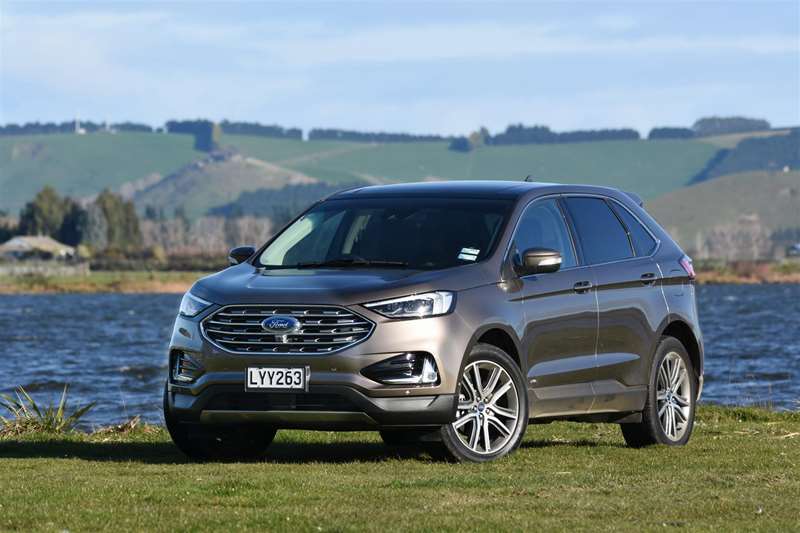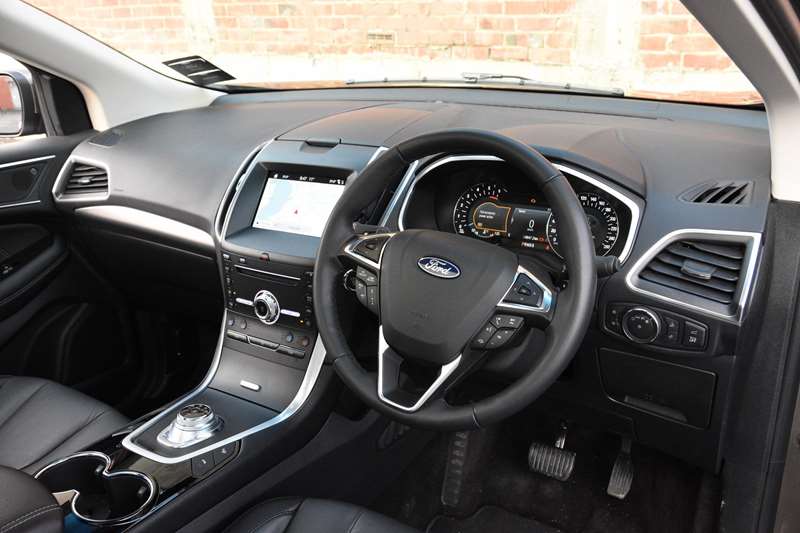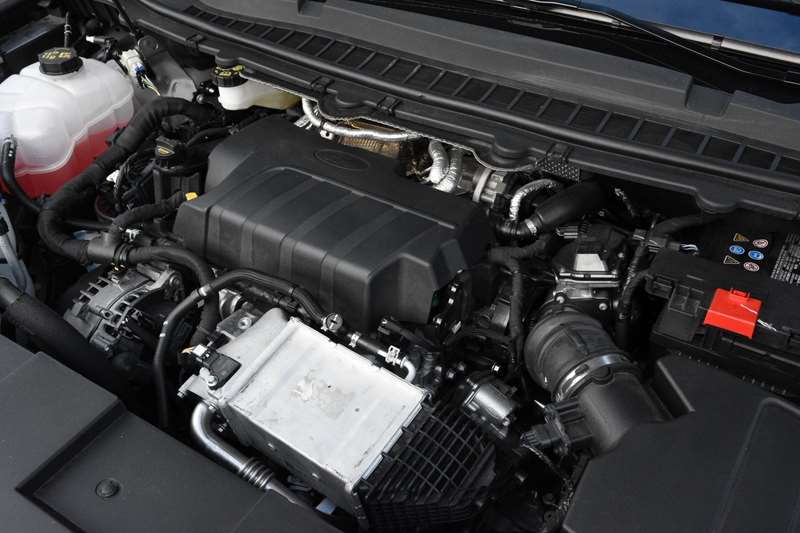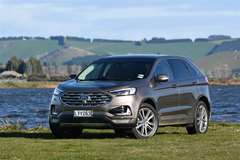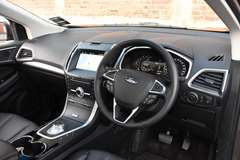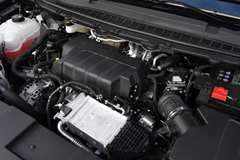Mechanical and cosmetic enhancements have kept the Ford Endura fresh for 2019. David Thomson reports in after a week driving the new flagship version.
What’s New?
‘‘Something old, something new, something borrowed, something blue.’’
This well-known wedding adage is an apt descriptor for the Endura mid-sized crossover sports utility, which passed through my hands a couple of weeks ago.
Something old, because while the Endura is a relatively recently arrival here, it’s a vehicle that has been around internationally since 2015. Something new, because, a general update for the current model year introduces a new two-litre turbodiesel engine and eight-speed automatic gearbox.
Something borrowed because the vehicle that goes by the name Endura here (and in Australia) comes to us from North America, where (like most of the world) it is called the Edge. Something blue, because the Endura wears the famous blue oval badge of Ford.
Slotting in between the Escape and the Everest, the Endura partially fills a spot once occupied by the Ford Territory. However, unlike that machine, the Endura does not offer a third row of seats, and rather than being Australian-designed and built, it comes from Canada.
The 2019 upgrade brings more than a fresh drivetrain. There are exterior styling tweaks, and changes to the interior design and equipment. There’s also an extension to the number of models available. The $69,990 Endura Titanium — as tested — is the flagship for the range.
The Titanium, like the $64,990 ST-Line, comes in all-wheel-drive, while the Trend is available as front-wheel drive only for $53,490 or 4WD for $2000 more.
What comes as standard?
Standard features from entry level include keyless entry and push button start, LED headlights, tow bar, front and rear parking sensors, reversing camera, heated mirrors, dual zone climate control, nine-speaker sound system and interior noise cancelling. The sound system is part of Ford’s SYNC 3 connectivity system, which operates via an eight-inch centre touchscreen and includes satellite navigation, voice control, and both Apple and Android smartphone integration.
The ST-Line adds active parking assistance, a hands-free power tailgate, power-operated heated front seats and 20-inch (rather than 18-inch) alloys. Stepping up to the Titanium brings a 180-degree front view camera, a power-operated panorama sunroof, a 12-speaker Bang and Olufsen sound system, chilled and heated front seats, heated rear seats, and a rear passengers’ entertainment system with display screens mounted on the back of each front headrest and wireless headphones.
Safety features provided across the range include autonomous emergency braking, active radar cruise control, lane departure warning and lane-keeping assist, and post-impact braking assistance. The Titanium, however, is the only model with blind spot monitoring and rear cross traffic alert.
What’s it like to look at?
Measuring just over 4.8m, the Endura is a substantial machine, with styling to match. In particular the blunt nose, refreshed with a grille that resembles that of the smaller Escape, a high bonnet line, and a strong rising style line along the flanks gives the vehicle considerable presence.
Yet, with neatly sculpted panel surfaces and relatively slim pillars, there is a certain elegance to the Endura’s looks. These were enhanced by the test car’s 20-inch alloys, front and rear scuff plates, a small rear wing, and the two-tone effect produced by the vehicle’s substantial bumpers and side-sills.
What’s it like inside?
It is hard to fault the Endura for room. Boot space below the cargo blind is an impressive 600 litres, expanding to 800 litres up to the roof lining. Activate a rocker switch in the boot and one or both of the split rear seat backs flips flat, more than doubling luggage capacity to 1857 litres.
Rear-seat room is equally impressive, with ample leg and headroom, and sufficient breadth to accommodate three adults. Featuring command-style seats separated by a wide centre console, the front of the cabin is also very roomy.
A distinctive feature of the Endura is a centre-mounted rotary control knob in place of a conventional gear-shift lever. Mounted on a chrome plinth and flanked by buttons for the electric park brake, parking sensor and parking assistant, it is rotated clockwise to progress through park, reverse, neutral and drive. Sport mode, meantime, is activated by a button in the middle of the knob, and there are also steering wheel-mounted paddle shift controls.
The Titanium gets the classiest cabin finish of the range. Both front seat occupants enjoy heated and chilled seats, trimmed in artificial leather, and with 10-way power adjustment. Trim surfaces comprise a mix of soft, semi-soft and hard touch surfaces, but with too few colour and texture contrasts to make a seriously plush splash.
The design of the dashboard is clean and uncluttered, although not as contemporary in its look as some of the Endura’s likely rivals. Similarly, while easy to use, the colour displays of the SYNC 3 infotainment interface look a little dated.
What’s it like to drive?
It took some time to adjust the driver’s seat to my liking, but once sorted it proved very comfortable, with the excellent lumbar support a highlight.
Visibility is generally good, although the Endura’s high waist and bonnet lines can make it challenging when manoeuvring in tight spaces — that’s when the Titanium’s 180-degree forward view camera comes in very handy.
The new 140kW/400Nm two-litre turbodiesel engine musters sufficient pep to give the Endura a respectable, though far from class-leading, turn of speed.
Scoring well for refinement, the motor delivers its best from 2000-3500rpm, and the fine new gearbox is calibrated to keep the engine in that sweet spot as much as possible. Economy is good too, being rated at 6.7L/100km of the standard cycle and achieving 7.6L/100km test with Drivesouth.
Well-contained engine noise is matched by very low levels of wind-roar and tyre-rumble, with some of the credit for this belonging to the vehicle’s active noise cancelling system.
Large SUVs sourced from North America traditionally prioritise low-speed and highway ride comfort over handling prowess, but the Endura does not conform to these expectations.
Yes, the test car rode well, due at least as much to its very good body control as the softness of its suspension and it was able to maintain a pleasing degree of composure over poorly-surfaced local byways. That composure, combined with plenty of grip, a good resistance to body roll, and steering which, while lacking for feel, is quite precise, make the test car a confident and sure-footed proposition down winding back roads.
Being aimed firmly at the soft-road end of the SUV market and with a fully automated all-wheel drive system, the Endura doesn’t carry a capacity for serious rough-country adventuring within its brief. But it took several sections of gravel and one modestly rough all-weather track in its stride on test, and would make an excellent skifield vehicle.
Verdict
While the absence of a third row of seats will be a deal-breaker for some, and the interior isn’t the most contemporary, the Ford Endura Titanium scores well on several counts.
Most importantly, it’s a hugely spacious and well-equipped five-seat SUV, and one that has decent road manners as well as excellent ride and refinement among its key dynamic qualities.
Photos: David Thomson
